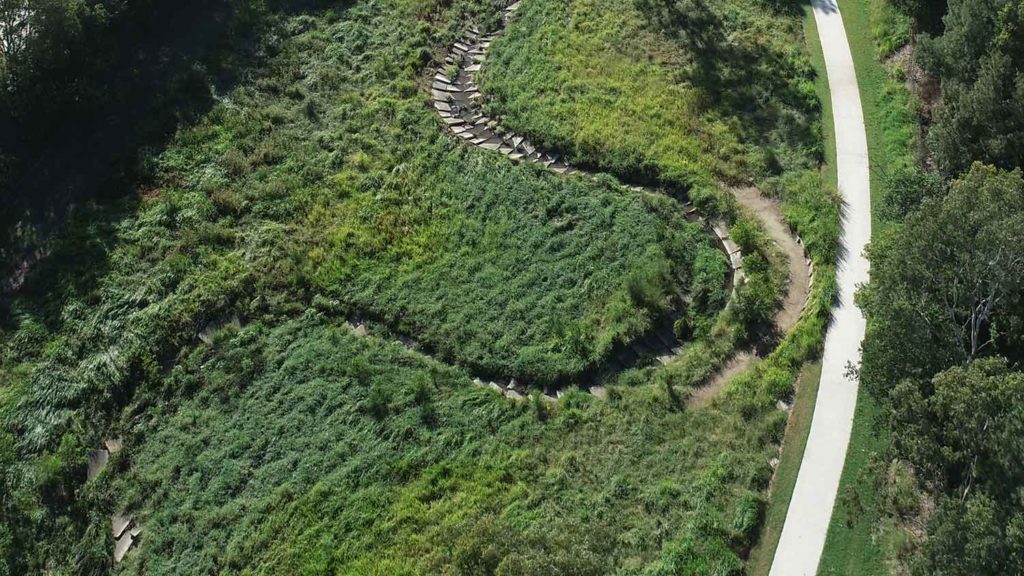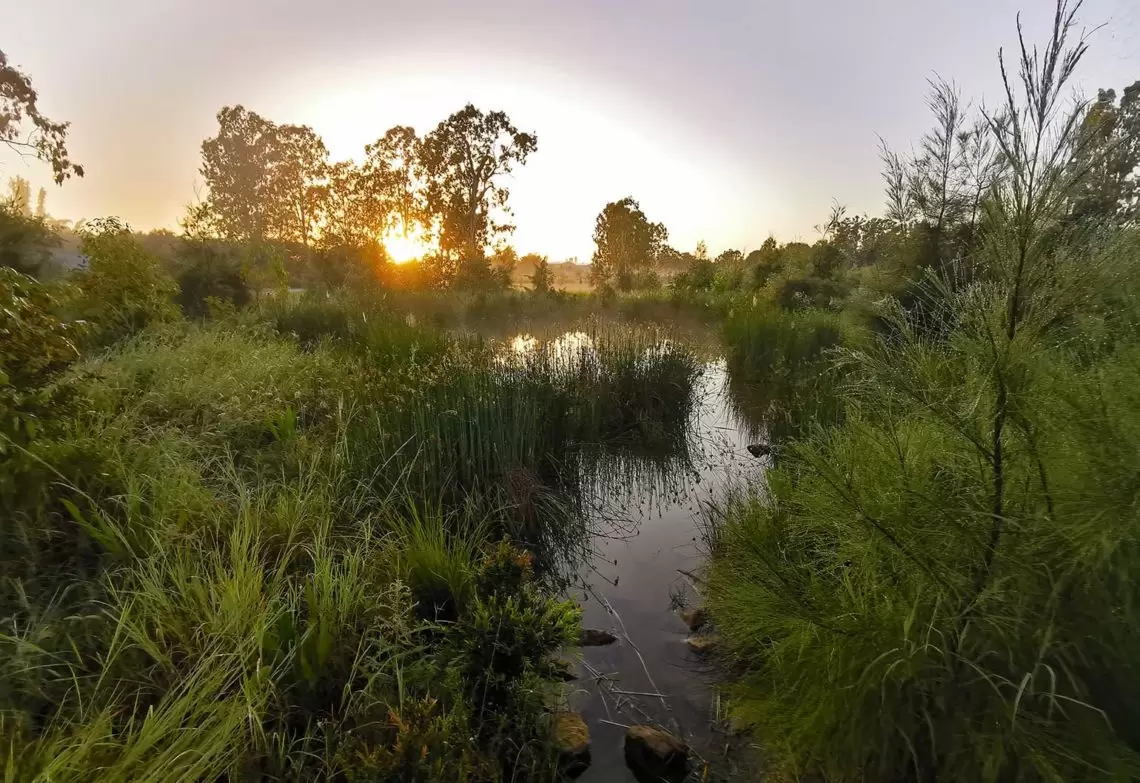Small Creek was a 1.6 km stretch of concrete drain, until a project set out to turn it into a living waterway — and created a model for other communities to follow.
During most of the last century, civil engineers put a lot of effort into converting creeks into drains, and reversing that process requires arguably even more engineering nous.
So says Alan Hoban, Director of Civil and Water Engineering at consultancy firm Bligh Tanner, which was appointed along with Landscapology by Ipswich City Council to bring the channel of grey infrastructure on the outskirts of Brisbane back to life.
“We started with the obvious issue of ensuring we’re not making flooding any worse,” he told create.
“That’s a significant engineering exercise, using earthworks models and flood models.”
Knowledge of hydrology in urban catchments is vastly different from what it would have been a century ago, when Small Creek was turned from a stream into a drain. Hoban said the team wasn’t trying to recreate what the creek used to be like, but rather wanted to design a new stream that worked for the catchment as it is now.
“Managing erosion is a big environmental engineering challenge,” he said.
“Sediment naturally moves down creeks, so processes of erosion and deposition need to be factored into the design, and we need to think about soil profiles, rock selection and the role of plants.”

With a remit to produce clean water and provide habitat for wildlife, as well as better connections to a path and bikeway, Hoban said his firm “pushed the boundaries” of 12d software to create organic forms, rather than the geometric forms most civil engineers are used to.
“If you just armour the new creek with large rocks you’re not really working with natural channel design principles,” he said.
Creative reconstruction
A key pillar of the project was to use recycled materials in an effort to minimise the amount of waste sent to landfill.
Hoban said the concrete from the drain told an important story about our evolving approaches to waterways and the role of nature in our cities.
“The concrete was saw cut on site [and] all exposed reinforcement was treated with epoxy to make it last longer,” he said.
“We used it as an erosion resistant channel lining in areas with high velocity, and also for retaining walls.”
Hoban believes that the uncertainty of using recycled materials can deter some engineers, but said he hopes this project will encourage others to use them more often. He also wants cities to create more dynamic and wild places that encourage the community to reconnect with nature.
“We need to embrace risk and deliberately design for kids to be able to interact with creeks,” he said.
“I’m keen for engineers to think less about rigid flood immunity standards for footpaths and bikeways, but rather to first think about the benefits of getting people closer to water, and then work through the public safety issues.
“Local governments are starting to see that the community values investment in green infrastructure. We’re busy with creek naturalisation projects in Sydney, Bundaberg and Brisbane, and we’re borrowing a lot from Small Creek in those designs.”




Mosquitos welcome!